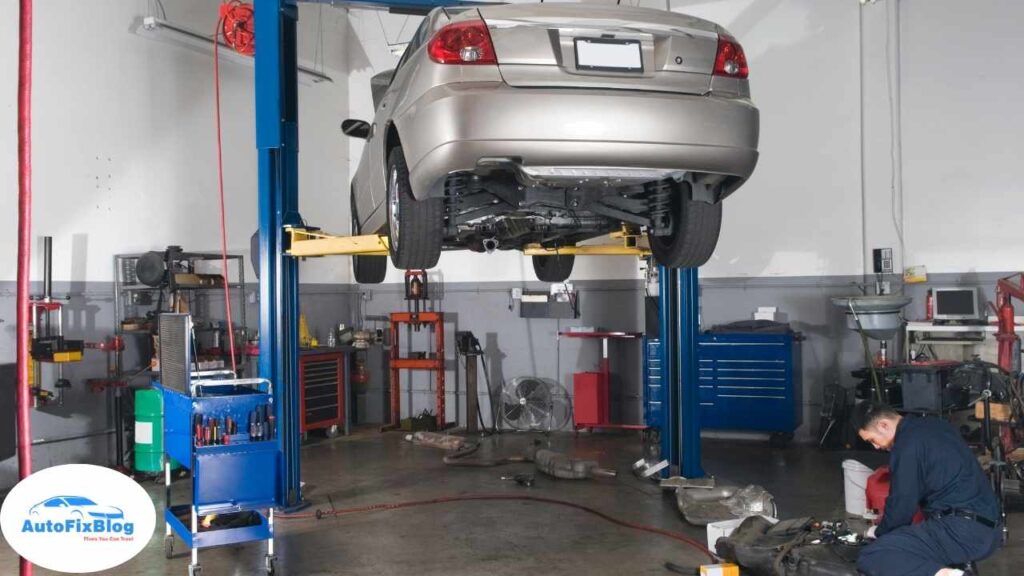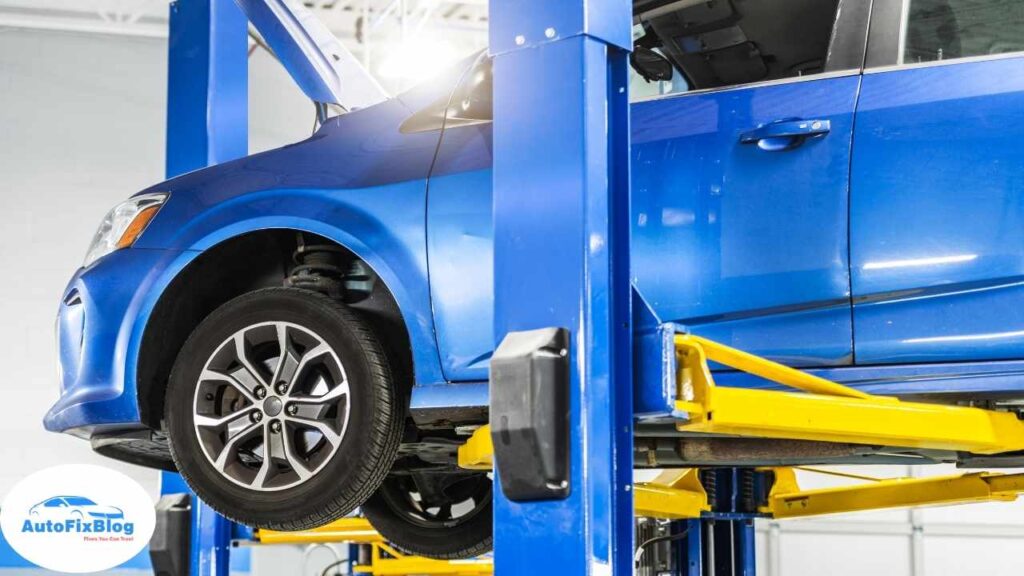If you’re a car enthusiast or someone who enjoys DIY automotive maintenance, you’ve probably come across various scenarios that require lifting your car. Whether you’re rotating tires, working on the brakes, or dealing with more serious car issues, knowing the mechanics behind lifting your vehicle safely is essential.
One of the key concepts in this process is understanding how torque, specifically measured in foot-pounds, plays a role in lifting a car. In this guide, we’ll delve into the physics behind lifting a car and explain how many foot-pounds to lift a car safely and effectively.
Understanding Foot-Pounds and Torque
Before diving into the specifics of how many foot-pounds to lift a car, it’s important to understand what foot-pounds and torque are, as they are central to this concept. Torque is a measure of the rotational force required to turn an object. In the context of lifting a car, torque is the force applied to the lifting mechanism, like a jack or lift, to raise the vehicle off the ground.
Foot-pounds: A foot-pound is the amount of torque produced when a one-pound force acts on a lever one foot away from the pivot point. Essentially, it’s a measurement of rotational energy.
When you use a tool like a jack to lift your car, you’re applying torque. The amount of torque needed depends on factors such as the weight of the vehicle and the type of lifting mechanism used.

Key Factors that Affect Lifting Torque
The number of foot-pounds to lift a car can vary widely depending on several factors. Understanding these variables will help you choose the right tool for the job and ensure you can lift your car safely.
Weight of the Car
The heavier the car, the more force and torque are needed to lift it. For example, lifting a compact car will require less torque than lifting a heavy-duty truck. If your car weighs around 3,000 pounds, the torque required will be different compared to a smaller vehicle weighing 2,000 pounds or a larger one tipping the scales at 4,500 pounds.
Type of Lifting Tool
There are different types of tools available for lifting a car, including scissor jacks, hydraulic jacks, and mechanical lifts. Each tool requires a different amount of torque to raise the car. A scissor jack, for instance, requires more manual effort (and thus more torque) compared to a hydraulic jack, which uses fluid pressure to assist in lifting.
Point of Application
The location where you apply the force can also influence how many foot-pounds to lift a car. For instance, if you’re lifting the car from the middle or a central point, the torque required will differ compared to lifting from one side. Additionally, factors like uneven weight distribution or lifting only one side of the vehicle can influence the torque needed.
Efficiency of the Lifting Mechanism
Not all jacks and lifts are created equal. Some mechanisms are more efficient than others, meaning they convert applied force into lifting power more effectively. Hydraulic jacks are more efficient than scissor jacks, and this efficiency can reduce the number of foot-pounds to lift a car.
Friction and Ground Resistance
The surface on which you’re lifting the car also matters. On smooth surfaces, the friction and resistance are lower, meaning you need less torque to get the vehicle off the ground. On rough or uneven surfaces, more torque might be necessary due to added resistance.
Calculating How Many Foot-Pounds to Lift a Car
Now, let’s get into the numbers. To calculate how many foot-pounds to lift a car, we need to take into account the weight of the car, the length of the lever (in this case, the handle of the jack or lifting tool), and the efficiency of the lifting tool.
Formula for Torque:
Torque (T) = Force (F) × Distance (D)
Here, “Force” is the weight of the car, and “Distance” is the length of the lever or handle used to lift the car. The product of these two variables gives you the torque required to lift the vehicle in foot-pounds.
Example 1: Lifting a Compact Car
Let’s say you have a compact car that weighs 2,500 pounds, and you’re using a scissor jack with a handle that is 2 feet long.
- The force applied is equal to half the weight of the car, as you’re likely lifting one side at a time. Therefore, the force is 1,250 pounds.
- The distance (length of the lever or handle) is 2 feet.
Torque = Force × Distance
Torque = 1,250 lbs × 2 ft = 2,500 foot-pounds
In this case, you would need 2,500 foot-pounds of torque to lift one side of the compact car with a scissor jack.
Example 2: Lifting a Heavier Car
- Now, let’s consider a larger vehicle, like an SUV, that weighs 4,000 pounds. You’re using a hydraulic jack with a handle that is 3 feet long.
- Again, you’re lifting one side, so the force applied is half the car’s weight, or 2,000 pounds.
- The distance is 3 feet.
Torque = Force × Distance
Torque = 2,000 lbs × 3 ft = 6,000 foot-pounds
In this case, you would need 6,000 foot-pounds of torque to lift one side of the SUV.
Tools and Methods for Lifting a Car
Depending on how many foot-pounds to lift a car you need, certain tools will be more suitable than others. Let’s break down some common tools and their torque requirements.
Scissor Jack
This is a basic, manual jack that is common in most cars for emergency tire changes. It requires manual effort and, as seen in the examples above, can require thousands of foot-pounds of torque to lift a car.
Hydraulic Jack
A hydraulic jack uses fluid pressure to assist in lifting the car, which significantly reduces the amount of effort (and torque) needed. Hydraulic jacks are more efficient and are ideal for heavier vehicles. While it still requires torque to operate the jack, the amount is substantially lower than with a scissor jack.
Floor Jack
Similar to a hydraulic jack but with a broader base for stability, floor jacks are commonly used in professional and home garages. They offer a balance between manual effort and hydraulic assistance, providing sufficient torque to lift most vehicles.
Vehicle Lift
For larger vehicles or professional environments, an electric or pneumatic vehicle lift can be used. These devices operate with minimal human effort and use electrical or air power to provide the torque necessary to raise the car entirely off the ground.
Addressing Car Issues While Lifting
Lifting a car properly is crucial, especially when you’re dealing with car issues that require getting underneath the vehicle. Whether you’re changing the oil, fixing a flat, or diagnosing more severe car issues, having the right amount of torque ensures that the vehicle remains stable during the repair process.
Safety Considerations When Lifting a Car
When determining how many foot-pounds to lift a car, safety should be your top priority. Here are some key safety tips:
- Always use the correct lifting point: Cars are designed with specific lifting points, usually reinforced areas on the frame. Using the wrong point can lead to damage or even accidents.
- Secure the car with jack stands: Once the car is lifted, always use jack stands to secure the vehicle in place. Never rely solely on the jack.
- Work on a stable surface: Lifting a car on an uneven or soft surface can be dangerous. Ensure that you’re working on a flat, stable area like concrete.
When it comes to lifting a car, knowing how many foot-pounds to lift a car is essential for both safety and efficiency. Depending on the vehicle’s weight, the tool you’re using, and the point of application, the amount of torque required can vary.
From manual scissor jacks to advanced hydraulic systems, different tools have different requirements, but understanding the basics of foot-pounds and torque ensures you’re prepared for the job.
Whether you’re dealing with minor maintenance or more significant car issues, knowing the right amount of torque to apply will help you get the job done safely.



